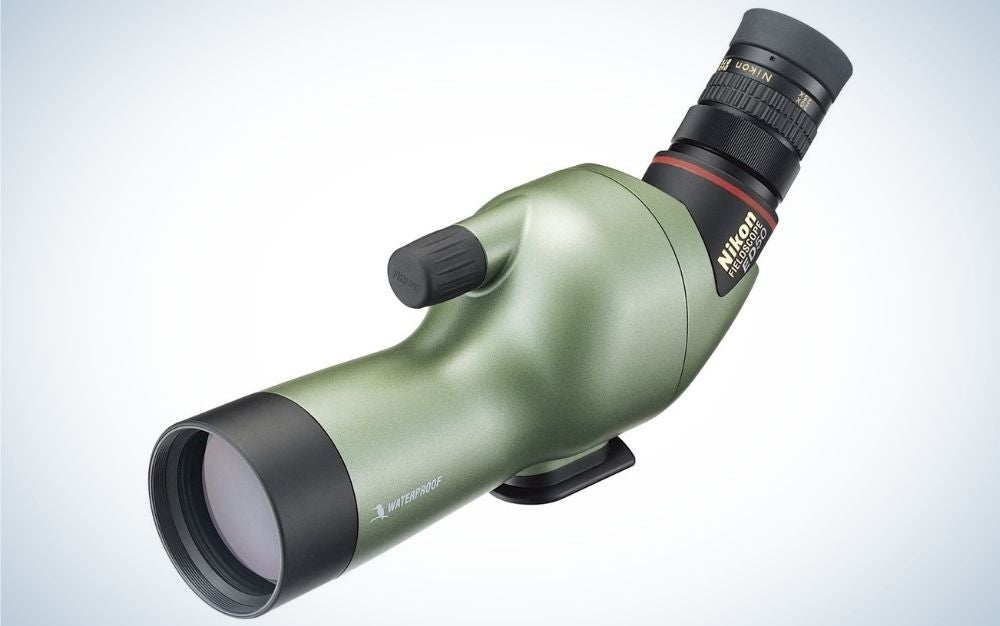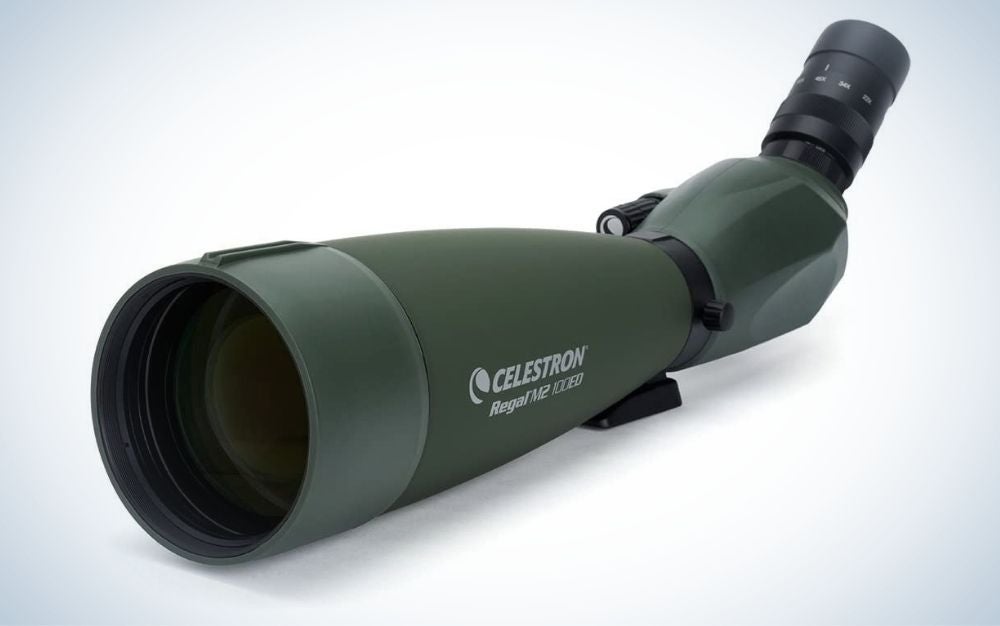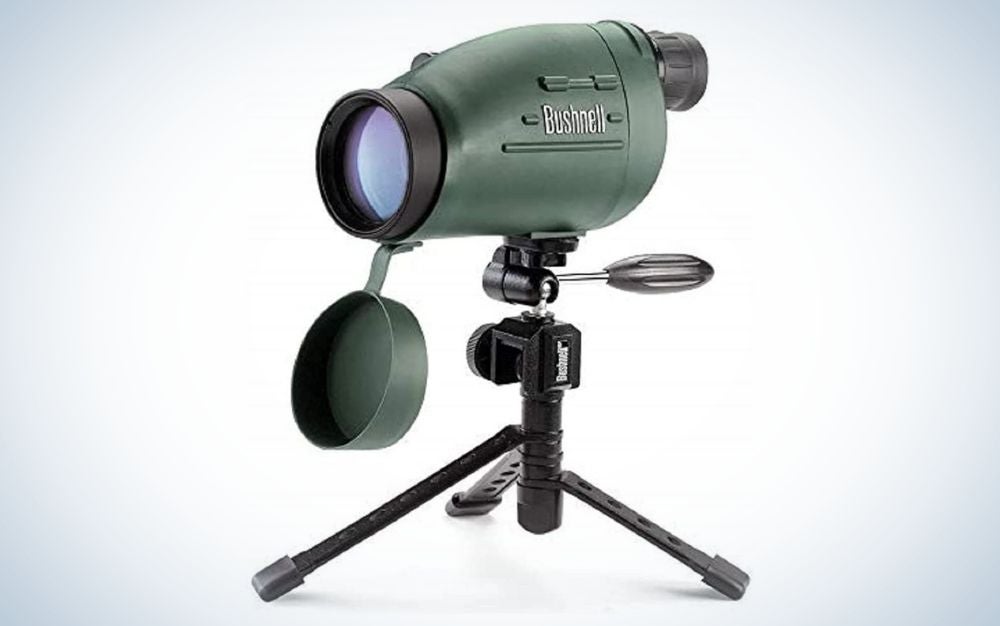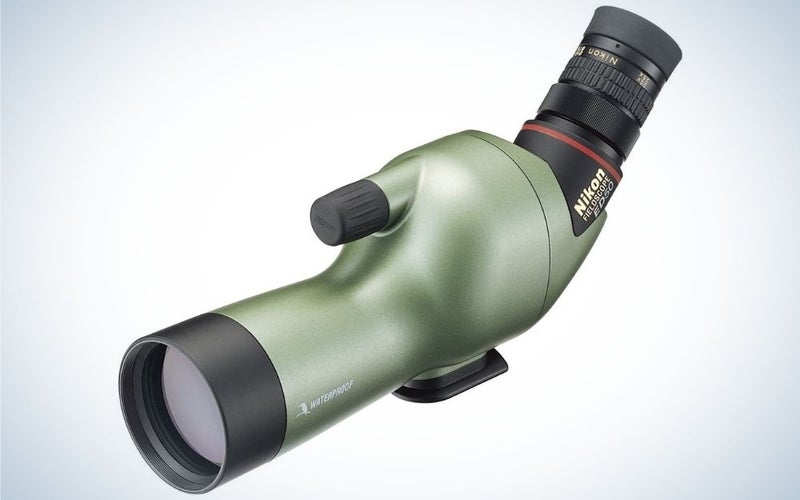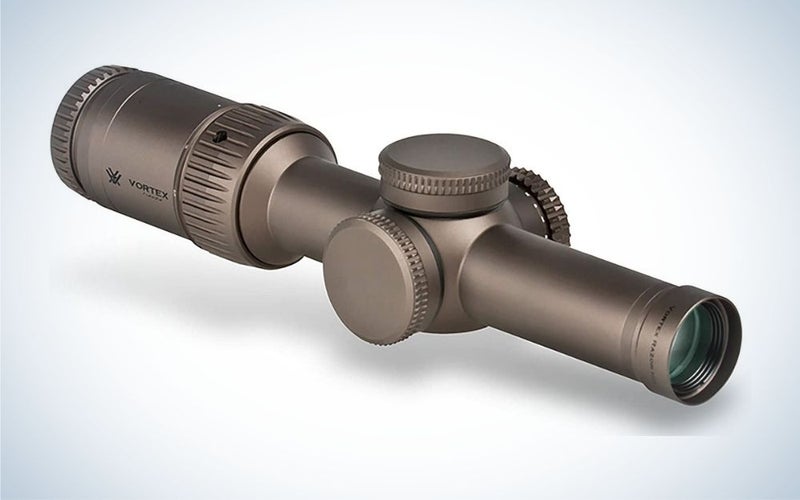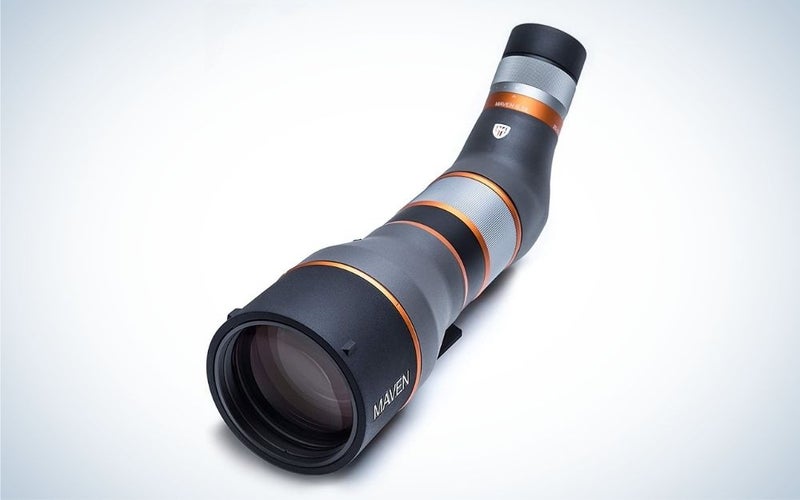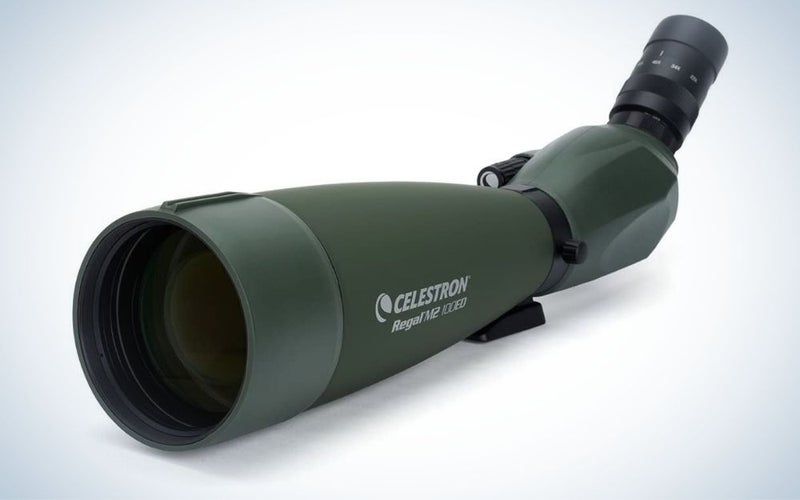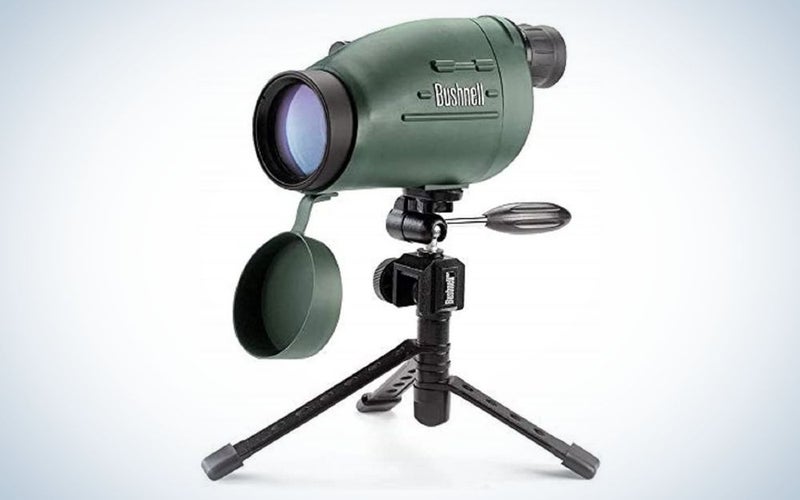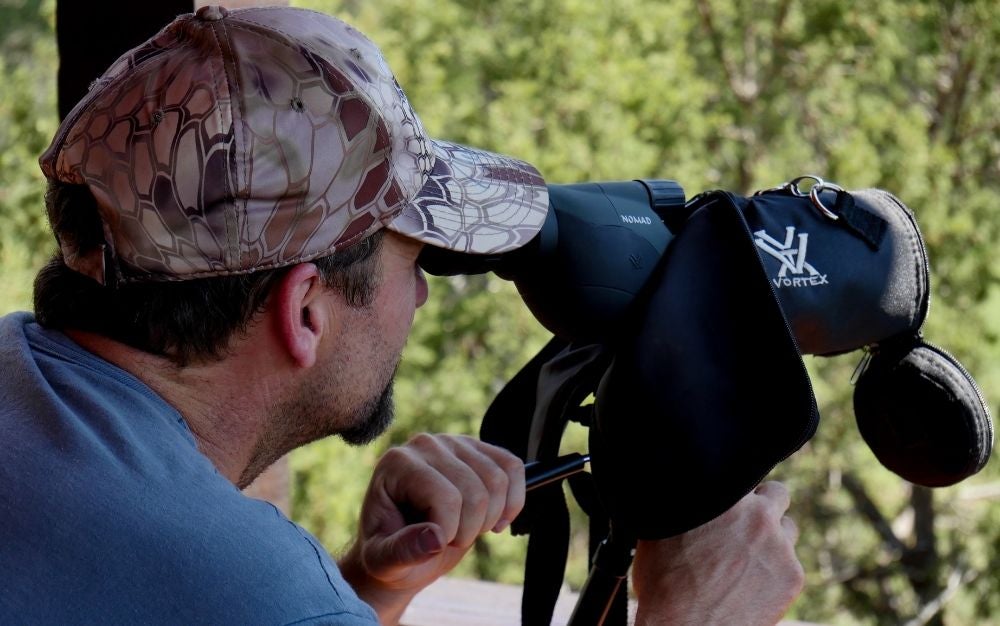
While binoculars tend to top out at a magnification power of about 10 times the size of an object, spotting scopes expand that to more than 60 times the size. That means if you need to see across the length of several football fields—instead of just seeing the action on the field from the upper deck—you’re in the market for a spotting scope. The best spotting scopes, like telescopes, can be used for a variety of purposes. Photographers add them to their camera gear to capture close-up images of things that are far away in a process known as digiscoping. Hunters and bird watchers rely on scopes to track wildlife that’s far away, while stargazers use them to view distant planets. No matter your intended use, you can find the best spotting scope to meet your needs. You just have to know where to look.
- Best for photographers: Nikon Fieldscope ED50 Angled
- Best spotting scope for hunting: Vortex Optics Razor HD Gen II-E
- Best for bird watchers: Maven S.1A Spotting Scope
- Best for stargazers: Celestron Regal M2 100ED
- Best spotting scope for the money: Bushnell Ultra Compact Spotting Scope
What to consider when shopping for the best spotting scope
Some things like waterproofing and fog resistance are all but standard. But when it comes to glass quality, magnification, and lens sizes, the best spotting scopes vary widely. Here’s what to consider as you search for the best spotting scope for your specific purposes.
Have you considered every angle?
Some spotting scopes come with a straight-through viewing setup, similar to binoculars, while others have eye pieces that are angled at 45 degrees. Although it might not seem intuitive to angle the eyepiece, the angled setup is more comfortable when you’re sitting or lying down, and it also works better with tripods, preventing you from having to crouch. In addition, if you’re bird watching, and therefore often looking up, the angled configuration means you don’t have to tilt your neck to focus on the sky.
Does your scope come with the best in glass?
The best spotting scopes have fluorite-coated, high density, or extra-low dispersion glass lenses that create a brighter, more vivid view by allowing all colors to come into focus at once. This is also known as limiting chromatic aberration. The quality of the glass determines how well you’ll be able to see with your spotting scope—and even how far you’ll be able to see. Scopes with the same 80mm lenses and magnification ranges can vary significantly based on the glass quality. Remember, it doesn’t really matter how much you can magnify a blurry view.
Do you want to zoom with your view?
Some scopes allow you to change the magnification level, while others have eyepieces with fixed magnification levels. If your focus changes, or you’re following a fast-moving target— like birds—zooming is a helpful feature. But note that as you zoom in, you also limit your overall field of vision. Zoom lenses let you change from less than 20x to more than 60x but tend to not gather light as well as fixed lenses, though this isn’t a hard-and-fast rule.
Is there relief for sore eyes?
With the best spotting scopes, you don’t have to actually press your eye to the eyepiece in order to see out. That’s helpful if you wear glasses or if you want to limit the irritation that could come from using a scope for a sustained period of time. Eye relief refers to the distance (typically in millimeters) that your eye can be behind the focal point to see the entire field of view. Anywhere between 12mm to 15mm of eye relief should work for most people who wear glasses, but some of the best hunting scopes have an eye relief that stretches several inches, meaning hunters don’t have to crouch over their scope as they wait for the deer to show up.
Is the eyepiece included?
It’s worth noting that eyepieces are sometimes sold separately from scopes. Pay attention to what’s supposed to be included —otherwise, you may feel blindsided when a scope shows up without an eyepiece.
The best spotting scopes
Whether you want to take pictures or save money, you can find a scope to meet your needs. We’ve set our sights on the following brands and products as the best spotting scopes available to serve a variety of long-range viewing purposes.
Best spotting scope for photographers: Nikon Fieldscope ED50
Nikon
If you want the powerful zoom of digiscoping, having the best spotting scope is a necessary piece of photography equipment. This Nikon Fieldscope attaches to your DSLR, letting you capture images your telephoto lens can’t. The Fieldscope features a 50mm lens made with extra-low dispersion glass designed to limit chromatic aberration and focus on every color. You can also attach a 55mm filter for more power. The Nikon Fieldscope is lightweight (just over a pound) and can survive being in a meter of water for 5 minutes—so no worries if you accidentally drop the scope while setting up along the banks of an alpine lake. The lens is also fog-free thanks to nitrogen gas that displaces oxygen.
Best spotting scope for hunting: Vortex Optics Razor HD Gen II-E
The best spotting scope for hunting gives you the clearest view of when a shot is clear—even from football field-lengths away. This Vortex Optics scope takes that ability to a whole new dimension, with a 1-6×24, extra-low dispersion objective lens that lets you see up to 600 yards in front of you. An illuminated center dot helps with precision at all hours of the day. Plus, the durable aluminum construction has a low-glare matte finish that helps with camouflage, and the 4-inch eye relief means you don’t have strain to set your sights on the target.
Best spotting scope for bird watchers: Maven S.1A Spotting Scope
Maven
Whether you’re trying to snap an evening grosbeak or a new morning bird, the best spotting scopes offer a factor of 10 greater magnifying power over the best birding binoculars. The Maven S.1A scope is ideal for bird watching because it features 25x to 50x zoom that lets you follow a bird as it flies farther away, as well as an 80mm fluorite lens designed to deliver a bright view, from dawn till dusk. The robust objective lens does add to the weight—this scope checks in at 4 pounds—but at 14.9 by 6.3 by 3.9 inches, it’s still plenty packable. And the waterproof magnesium/polymer frame is also quite durable.
Best spotting scope for stargazers: Celestron Regal M2 100ED
Celestron
Made with the same lens coating that Celestron uses to maximize light transmission in its observatory telescopes, the Regal is the king of backyard stargazing making this our choice for best spotting scope for stargazing. The 100mm, extra-low dispersion glass provides vivid images, while the 22x to 67x zoom with an included eyepiece (the scope has 20x minimum magnification) will make the night sky feel as close as a planetarium ceiling. You can easily add this scope to your photography equipment thanks to a T-mount adapter that connects to your DSLR. At 5 pounds, this Celestron scope is somewhat hefty, but it includes a carrying case that can stay on the spotting scope while you’re using it, offering added protection to the already waterproof frame.
Best spotting scope for the money: Bushnell 12-36x50mm Ultra Compact Spotting Scope
Bushnell
For hundreds of dollars less than some of the best spotting scopes on the market, you get Bushnell, a 50mm objective lens with 12x to 36x zooming. It’s is the best for the money, considering it also features a multi-coated lens that will transmit light well. Although it won’t match the vivid look you’ll get out of an extra-low dispersion glass lens, you will get a tripod included with your purchase, plus water and fog protection.
FAQs
Q: Is an angled or straight spotting scope better?
An angled spotting scope is better if you plan to use a tripod, sit down while you scope things out, or want to watch the sky. Straight spotting scopes have more of an intuitive feel, similar to binoculars.
Q: What is spotting scope eye relief?
Spotting scope eye relief refers to the distance your eye can be behind the focal point in order to see the entire field of vision. Most of the best spotting scopes have some amount of eye relief—at least 12mm—so they can be used when wearing glasses. But some spotting scopes stretch the relief up to several inches.
Q: How far can you see with a 20-60×60 spotting scope?
How far you can see with a 20-60×60 spotting scope depends on the quality of the glass. The numbers tell you that your scope can zoom from 20 times to 60 times the actual size of an object using a 60mm lens. Generally speaking, these specs should work for seeing an object 100 yards away.
The final word on shopping for the best spotting scope
The best scopes let you see clearly from hundreds of yards away. But finding the most powerful scope is not as clear as simply looking for the largest lens, or the scope that offers the most amount of zoom. Glass quality is the penultimate factor in determining how brightly and vividly a lens will be able to transmit light. Ultimately, the best spotting scope is going to be in the eye of the beholder.
The post Best spotting scopes of 2022 appeared first on Popular Photography.
